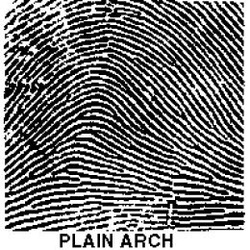

These forces could turn a whorl into a loop, for example. She explains that as a fetus’ hands grow, the palms and fingers would stretch and elongate. “We don’t know exactly how the genes shape fingerprint patterns, but it could be determined by the amount of strength from growth that’s put on an embryonic tissue called volar pads that plays an important role in the formation of different patterns of fingerprint,” says Jinxi Li, a postdoctoral researcher at the Human Phenome Institute at Fudan University in Shanghai, and co-first author on the paper. For example, people with whorl-shaped fingerprints on both of their little fingers tend to have longer little fingers than those who do not, and this correlation is strongly linked to genes involved in limb development.
ARCHED FINGER PRINTS SKIN
They found that mice with downregulated EVI1 developed abnormal skin patterns on their digits compared with wild-type mice.Īnalysis of human data revealed that fingerprint patterns are genetically correlated with finger length. To test their finding, the team modified the DNA of mice so their expression of EVI1 was turned down. One of the most influential regions appeared to be regulating the expression of a gene called EVI1, which is known for its role in embryonic limb development. Wang and colleagues scanned the DNA of more than 23,000 people across ethnic groups and found that at least 43 regions on the genome are associated with fingerprint patterns. Scientists have suspected that fingerprints have potentially evolved to help grab objects and sense their textures, but exactly how these patterns are formed remains unknown. These furrows and ridges begin to form on a fetus’ fingers and toes after the third month of pregnancy. While fingerprints are unique to individuals, they are generally categorized into three types: arch, loop, and whorl. This provides another classic example of pleiotropy, when multiple phenotypes are interrelated to each other and are affected by the same genes.”

But later it turns out fingerprint pattern is associated with genes for limb growth, which are critical for fetal development. “We started the work purely out of curiosity. “People may wonder why our team is working on fingerprints,” says Sijia Wang, a geneticist at the Shanghai Institute of Nutrition and Health, of Chinese Academy of Sciences, and co-senior author on the paper.


 0 kommentar(er)
0 kommentar(er)
